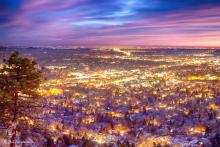Boulder, Colorado Gets Ready to Roll on Citywide Fiber Network
With the construction of its 65-mile dark fiber backbone nearly complete, city officials in Boulder, Colorado are now ready to move into the next phase of their plan: test the waters for a partnership with private or nonprofit Internet service providers (ISPs) to build out a citywide fiber network to deliver last mile service to the city’s 104,000 residents and businesses.
Last week, the city issued a Request for Information (RFI) “to gauge the interest of for-profit and nonprofit entities in forming a public–private partnership (PPP) with the city to make Gigabit per second-class bandwidth available to all Boulder homes and businesses.”
“As we prepare for further City Council discussion on a future community broadband operating model, it is imperative that we understand the market potential for a PPP (public-private partnership) to meet the city’s goals related to connectivity. We look forward to responses that consider a variety of business models to share technological and operational responsibilities and financial risk with the city in innovative ways,” Innovation and Technology Deputy Director Mike Giansanti said in a press statement when the RFI was issued.
The city is looking for a partner or partners that will come to table with new ideas, create competition, and either fully fund or share costs.
Having prioritized a city-wide fiber-to-the-home (FTTH) build, city officials have identified two main goals: serve the growing demand for “affordable, reliable, and sophisticated broadband technology; and support a thriving business environment.”
Responses to the RFI are due by May 19 at 4 pm MDT.
City officials say they will consider a range of construction and operation designs as well as a variety of ownership models as the City Council will likely vote on the path forward and the execution of a contract sometime this year.



